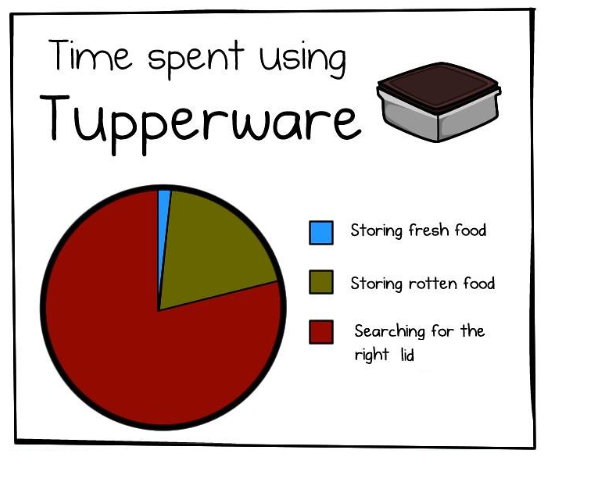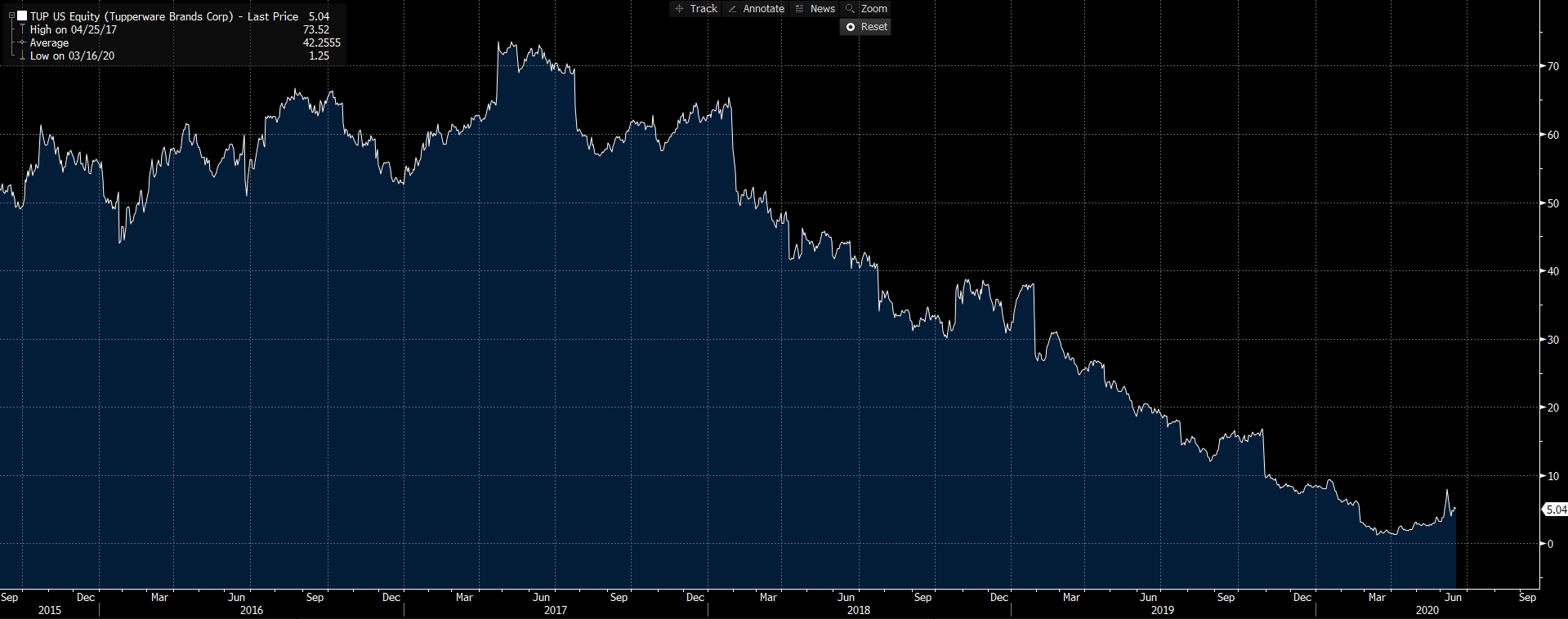Tupperware Party No More...
From humble beginnings as just another plastic container product sitting on store shelves in the 1940s, the shift towards a direct marketing strategy made Tupperware (TUP US) a global phenomenon. This strategy of course became known as the Tupperware party.

After enjoying decades of success due to its pioneering sales model, the business is now a shadow of its former self. TUP is best known for its namesake range of kitchen and home products, but also sells beauty and cosmetic products. Products are sold through its independent sales force of 2.8m people in over 80 countries. In 2019, the company generated $1.8bn in revenues with half coming from emerging economies and had an operating income of $126m.
In the post-war era, the party model gave women the opportunity to work and earn an income while still being able to socialise with friends. Tupperware consultants find customers prepared to host a party, who would then invite friends over to view the products. In return, the more products friends ordered, the more the host would earn in merchandise gifts. These parties allowed the business to expand its sales network rapidly as host success encouraged others to sign up to become hosts, thus creating a positive flywheel. Multi-level marketing schemes such as these can work wonders when they have momentum, but they also quickly unravel when the momentum inflects.
TUP's salesforce has shrunk and dragged revenues down along with it. Revenues are over 30% lower than 2013 peak levels with sales in all regions reporting nine consecutive quarters of decline, all but confirming a clear momentum reversal. Contributing to the decline has been the increasing popularity of e-commerce and the proliferation of other gig economy opportunities that have made the party model outdated.

The share price of TUP reflects its poor performance over the past few years...
The company is highly leveraged with over $1bn in debt including $600m in senior notes due to mature in June 2021. To the company's credit, it is actively deleveraging its balance sheet via asset sales, tendering for a portion of its senior notes at below par, renegotiating covenant levels and implementing cost-cutting measures. These outcomes will improve TUPs liquidity position, however, it will still remain in a precarious position with elevated debt.
To make matters worse, the company has been hit with a litany of bad news in recent months. Its CEO unexpectedly resigned after less than two years in the job, its long time former CEO and chairman retired and issued a profit warning amid an accounting investigation being conducted on its Fuller Mexico beauty business. Its independent direct sales model also obviously does not translate well in a COVID-19 lockdown environment particularly with a significant portion of its sales coming from some of the worst-hit emerging markets.
TUP reached a peak share price of over $90 in 2013 but has since crashed down to $5 today, valuing the equity of the business at $300m and the enterprise value at $1.1bn. This is the value for a highly leveraged business selling overpriced commoditised products with a deteriorating sales model... While we missed shorting the stock from much higher levels, shorting from lower levels can still prove lucrative if the equity value eventually falls to zero.
Get investment ideas from industry insiders
Liked this wire? Hit the follow button below to get notified every time I post a wire. Not a Livewire Member? Sign up for free today to get inside access to investment ideas and strategies from Australia’s leading investors.
3 topics

